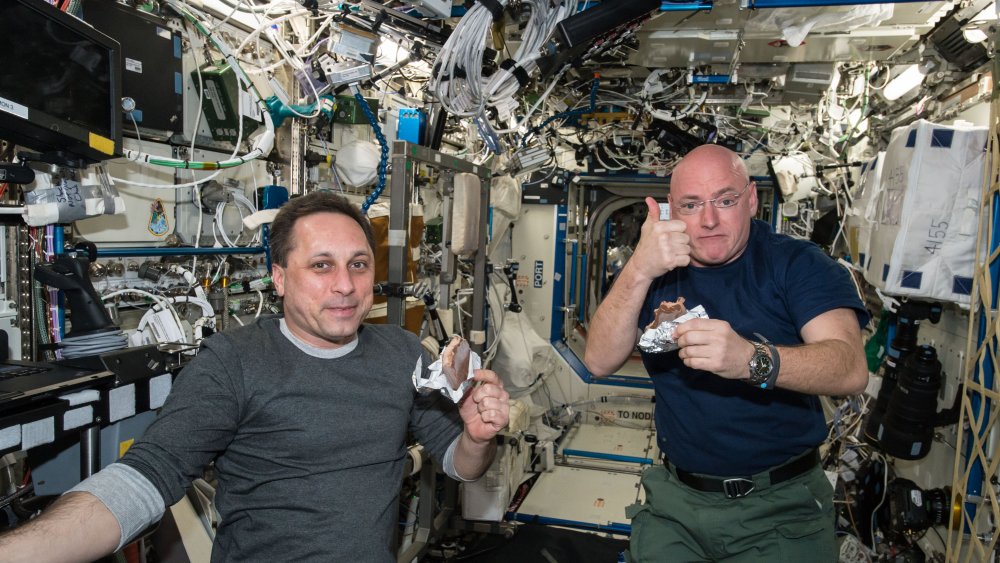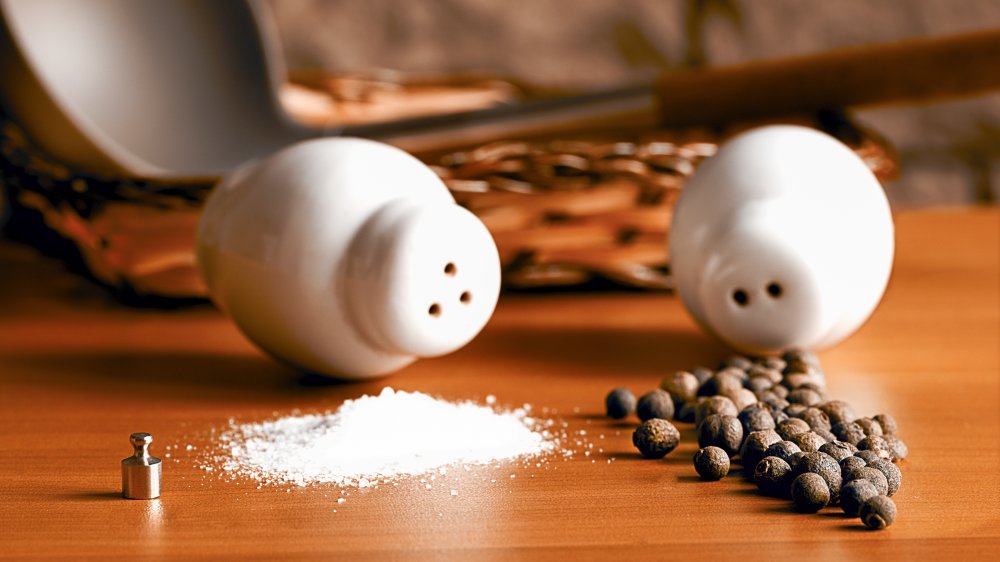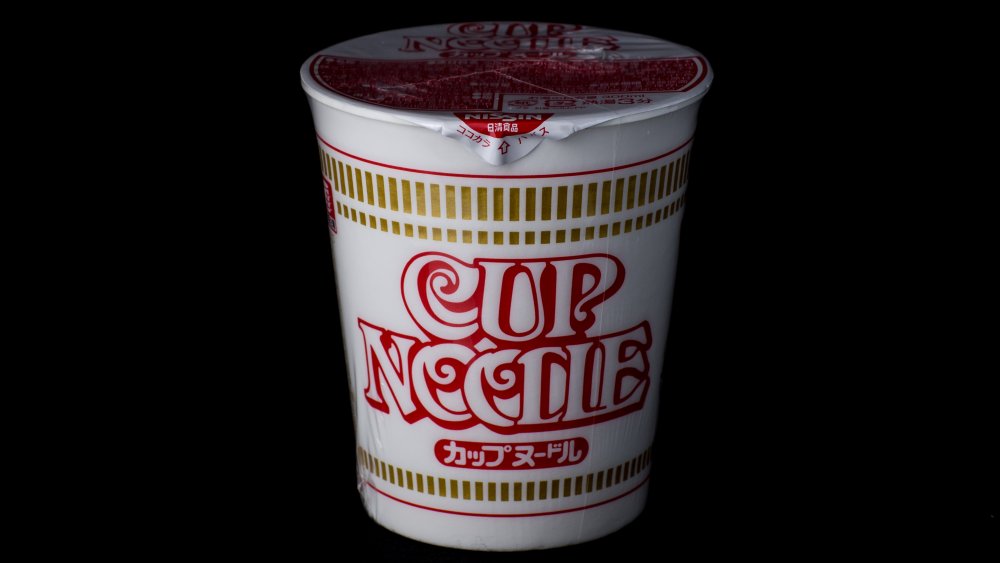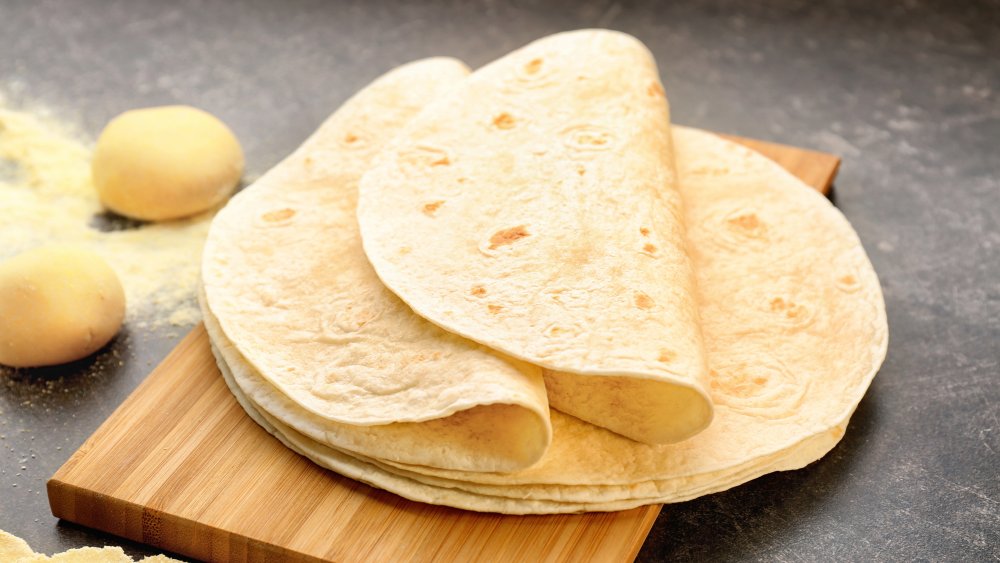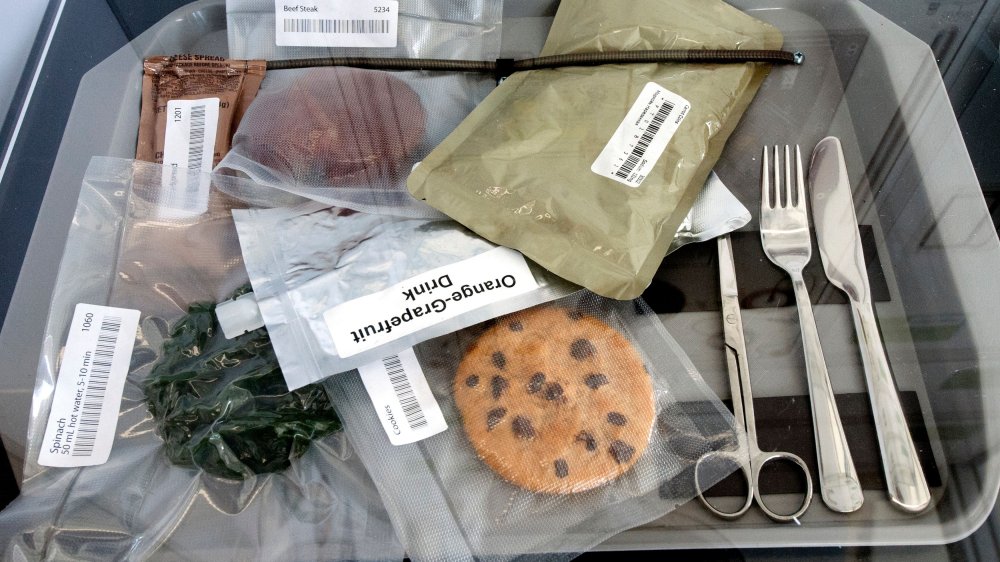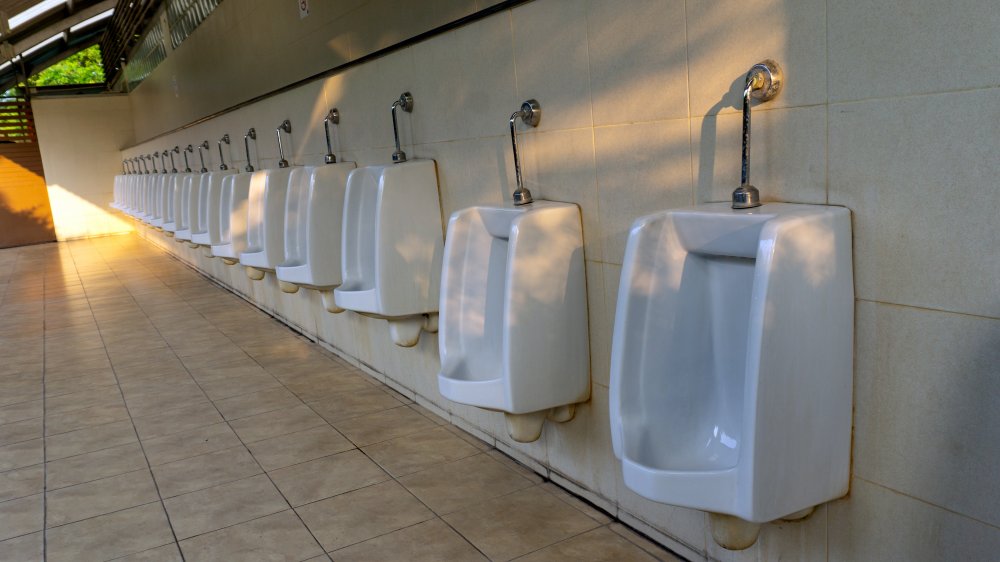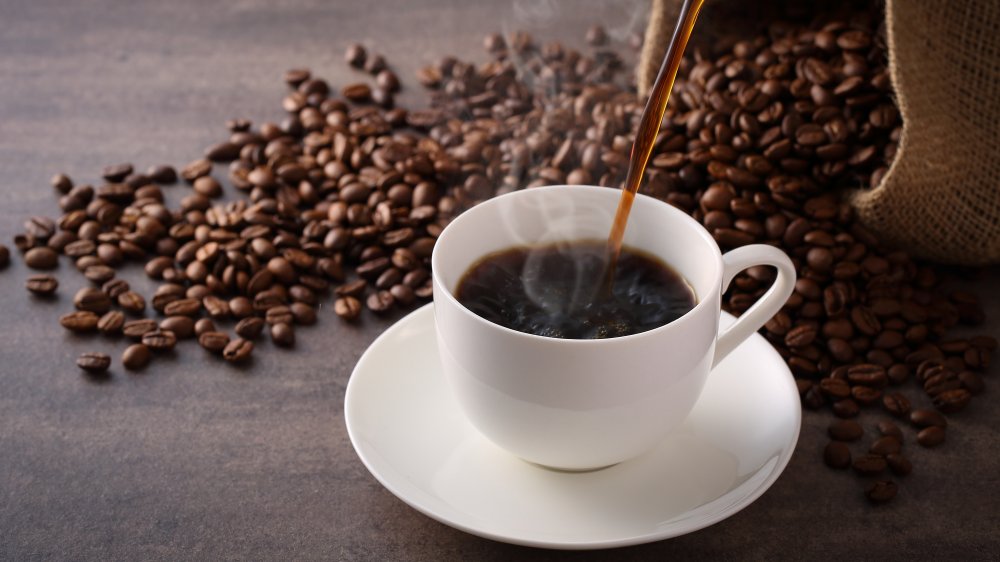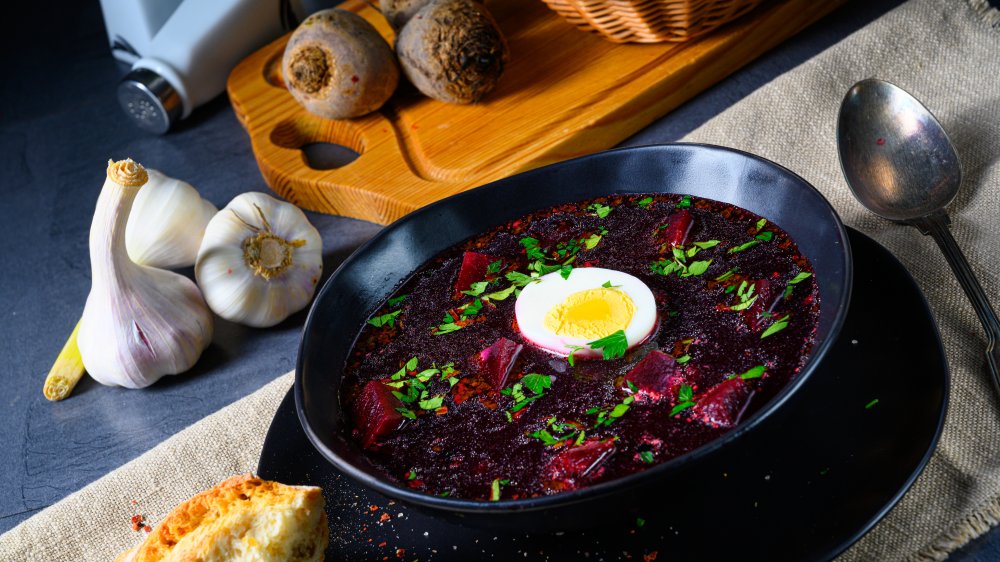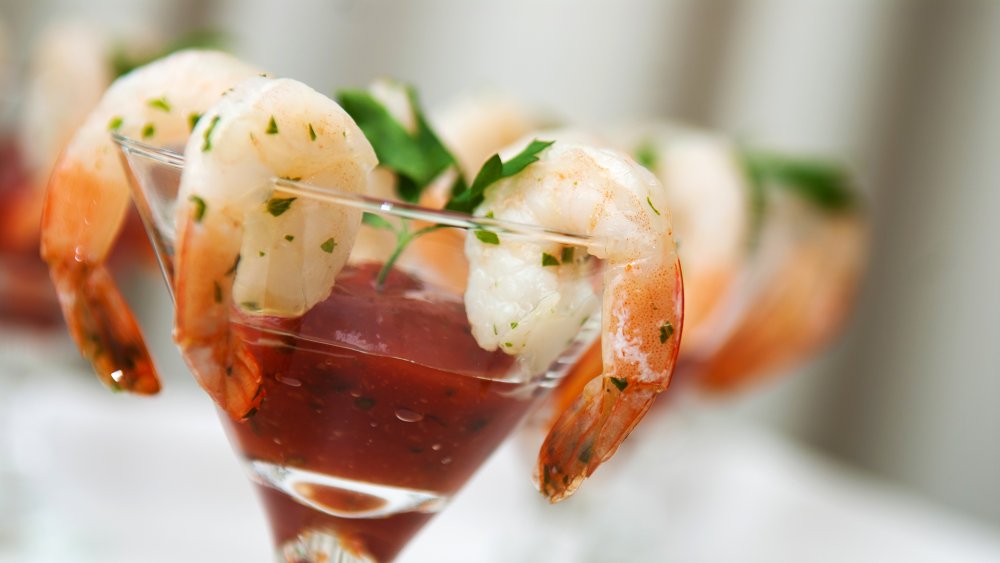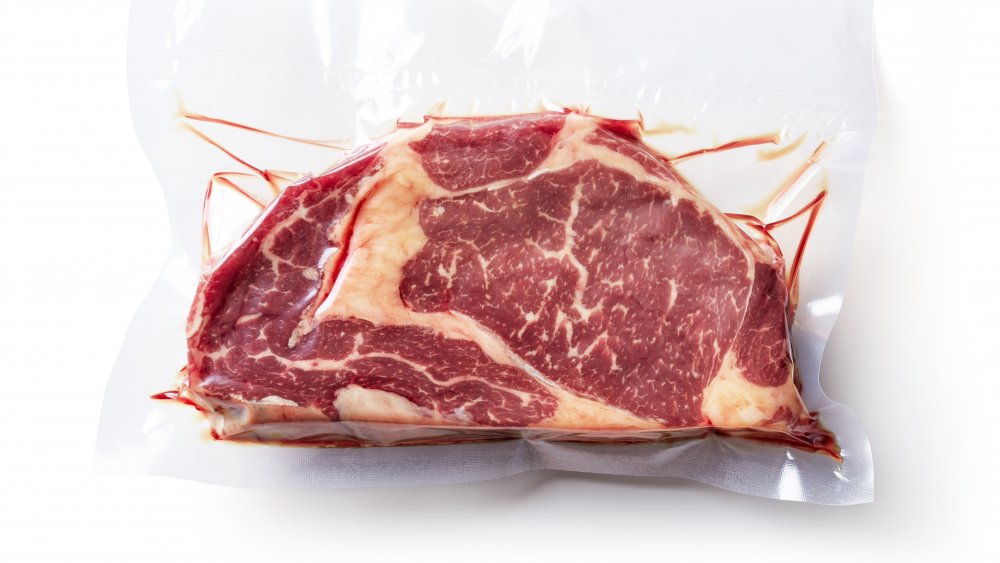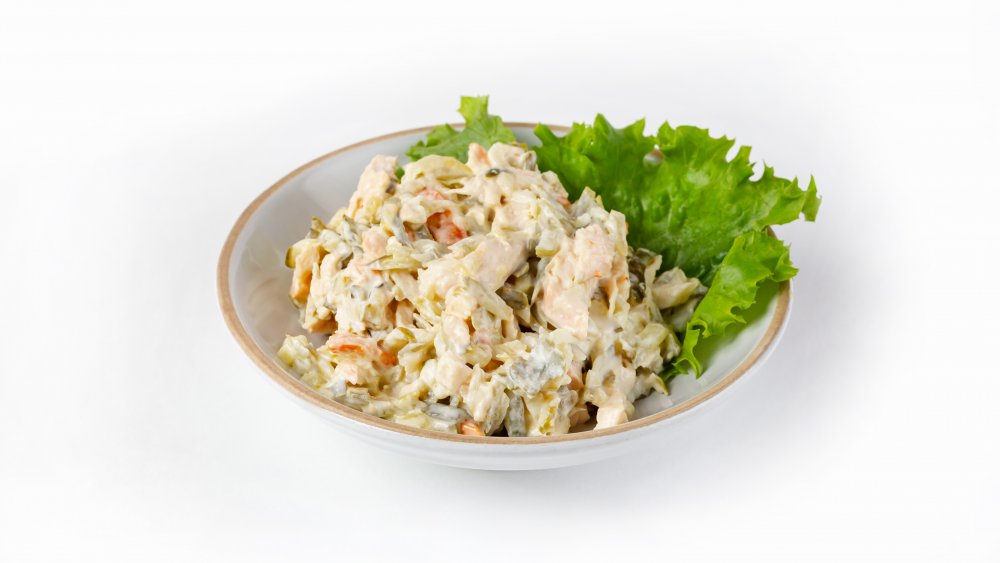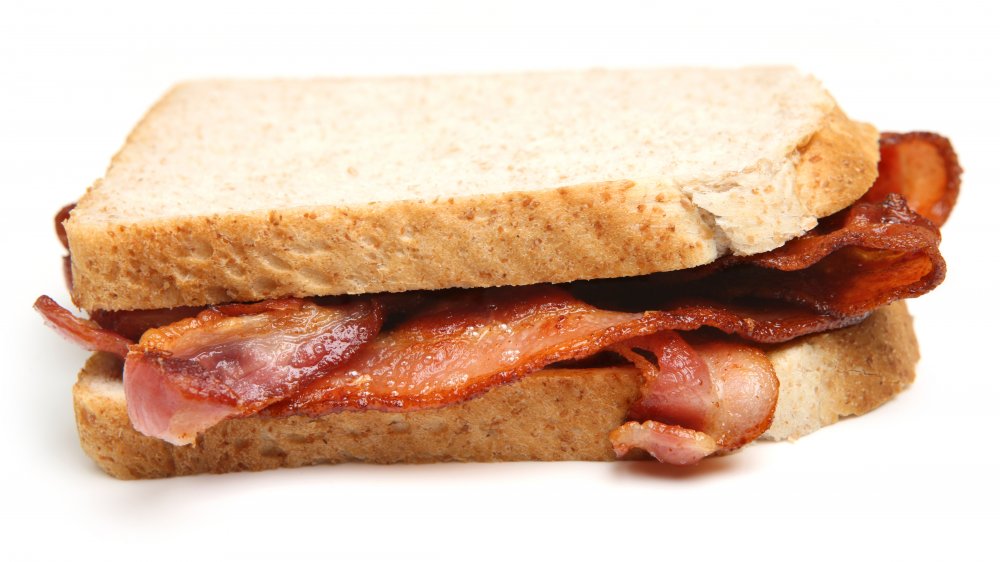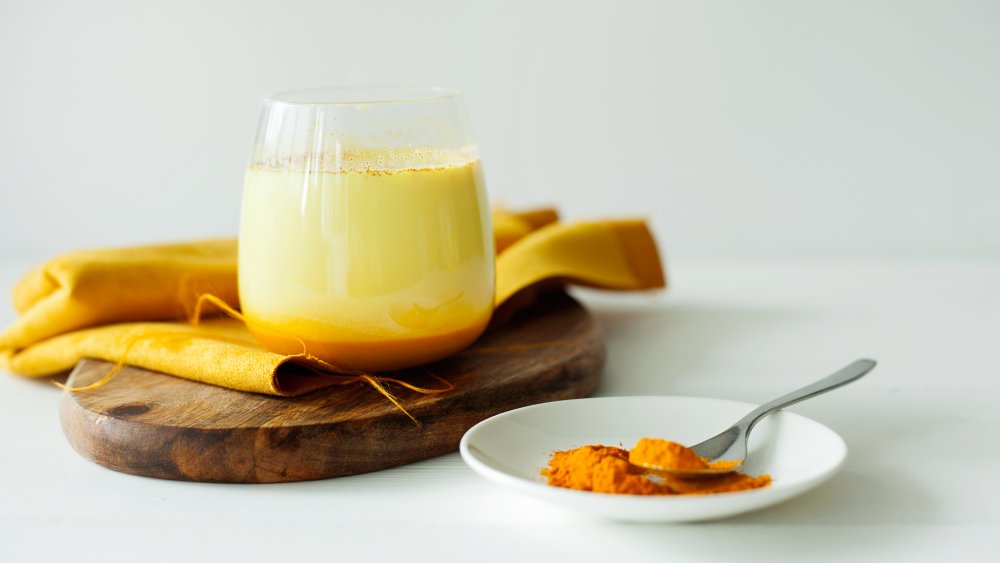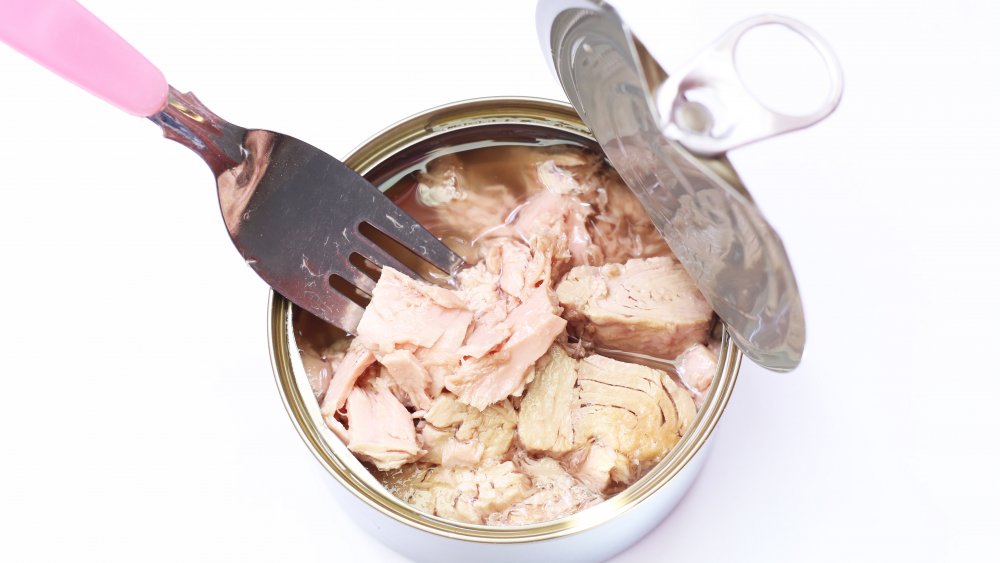The Weirdest Foods Astronauts Eat
It seems like there couldn't possibly be a downside to traveling into space and watching the solar system unfold in front of your eyes along with fellow astronauts. You've trained for years to look at the Earth from thousands of miles away, and now everything is so peacefully perfect. If only you could enjoy an amazing meal while gazing in awe at the planet...
Unfortunately, a life of zero gravitational forces doesn't pair well with a juicy ribeye steak or rich bowl of truffled pappardelle pasta. The grub NASA's finest are stuck with is specially designed to handle the intense environment of space, and that means flavor isn't the number one priority. It's all about supplying nutrition to the astronauts so they successfully complete the mission, and scientists put mind-blowing technology into the food. There have been outstanding strides made with astronaut eats, and space travelers today enjoy substantially better quality options than earlier generations, but that still doesn't mean the stuff isn't weird.
Foodies might want to rethink those NASA job applications after learning what a space diet actually consists of.
Astronauts use liquid salt and pepper
No mealtime is complete without the option of salt and pepper, the king and queen of table seasonings. A little dash of both spruces up a bland meal into something flavorful (well, at least edible), and flavor is, well, kind of a big deal — just ask literally every person who's ever worked in a restaurant. So, astronauts naturally have the option to salt-and-pepper-slam a meal, but they do it a bit differently.
Crumbs are a huge no-no in space. Anything that might crumble off into minuscule pieces and float idly around the shuttle poses some serious dangers. Runaway salt or pepper could potentially clog up air vents, invade switchboards, destroy electronic equipment, or lodge itself into the eyes, nose, and ears of crew members. To prevent all that mayhem, NASA provides the crew with liquid salt and pepper. A couple squeezes of the bottles does a bland space meal wonders.
According to SBS, the salt is dissolved in water, and the pepper is mixed into oil. It might seem strange, but it's probably a big help to astronauts trying to choke down some of the other strange foods they have to eat.
Space Ram soup is a familiar astronaut meal
If you don't know what it's like to go crazy on some cheap instant ramen noodles at 3 a.m. on a Friday, you never really went to college. Those were some memories. Now, we look at those supermarket shelves of Styrofoam Cup Noodles and appreciate the fact that our adult diets aren't as financially constrained to them. But, those making their way through NASA's astronaut training get to relive those college ramen days once they take their intergalactic ascent. Thanks to Nissin Foods, crews can now enjoy something known as "space ram" soup.
Cup Noodles worked hard to create a space shuttle-friendly version of itself, and they came out on top. Now, astronauts can indulge in the styrofoam noodle cups just like hordes of broke intoxicated college students. The noodles themselves are reformed into balls to fit on a fork and make for easier zero-g consumption, and extra spice is added due to space's tendency to strip food of flavor. And since there's no boiling water on space shuttles, Space Ram cooks at just 70 degrees.
With savory choices like soy, miso, curry, and pork broth, astronauts can feast on ramen and a heaping dose of their favorite college memory.
Astronauts get to feast on Taco Bell tortillas
Imagine the absolute excitement — and bewilderment, of course — of a shuttle crew coming upon a floating Taco Bell in the middle of the galaxy. Astronauts would excitedly ditch their vacuum-sealed NASA delights to "think outside the galaxy" and snag a Crunchwrap Supreme. It's a nice — but impossible (c'mon Taco Bell! Space is an untapped market!) — thought. However, Taco Bell still manages to make appearances during plenty of space travel (and we're guessing it's a sight for sore eyes).
Taco Bell entered into the space tortilla game in the late '90s, and they stepped onto the court ready to throw down. Bread is a giant no-no in space because it creates a lot of crumbs, which, as we know, is cause for a lot of panic inside of a zero-gravity space shuttle. So how were the astronauts supposed to enjoy sandwiches? Maybe there was something else that could work in the place of bread... like a tortilla.
Here's where our favorite Mexican fast food chain comes in. The people behind the food development scenes at Taco Bell engineered a tortilla that didn't abide by a standard shelf life. No, these things lasted much longer than what you'll find on grocery store shelves. Once NASA realized these doughy disks were still functional food even after one entire year, it pounced on them. And astronauts have been living mas ever since.
Astronauts eat something called wetpacks
Thinking about what's for dinner may not sit on the forefront of your mind when you're strapped into a billion-dollar space shuttle listening to Houston count you down. But, once you finally get to unstrap and float around a bit, an appetite might suddenly kick in. And, finding out something called "wetpacks" are on the menu definitely creates intrigue — and a little bit of apprehension.
Luckily, wetpacks are no reason to feel appetital anxiety. The reason for the name is the food inside actually retains a lot of its natural moisture, offering a meal with the consistency of regular Earth food rather than packaged freeze-dried stuff — though they were sometimes slightly stickier just to keep them from breaking up and floating away. According to NASA (via CNN), the astronauts of Apollo 11 enjoyed packages containing spaghetti with meat sauce, sausage, and chicken stew. Hey, it may not be a Michelin-rated dinner at Per Se, but when you're floating in orbit around the Earth, you take whatever you can get.
Some astronauts drink recycled urine
Look, when you're part of a team manning a space shuttle floating around the universe, you're not exactly privy to even a fraction of the resources here on Earth. So, you make do with what you have, and you find inventive ways to recycle. Well, American astronauts who work aboard the International Space Station found an ingenious — albeit stomach-churning — way to keep up the supply of water: Run urine through an intricate filter system for reuse as drinking water. That's right. Some astronauts drink pee, folks.
And it's not just urine, it's also condensate that comes from the air on the space station. According to The Guardian, condensate is "collected breath and sweat of the crew, shower runoff, and urine from animals on board the station." That's even better, right?
According to some crew members, you'd never even know the difference. Layne Carter, the water subsystem manager for the International Space Station at NASA's Marshall Space Flight Center said, "It tastes like bottled water. As long as you can psychologically get past the point that it's recycled urine and condensate that comes out of the air."
ISS commander Chris Hadfield, explains in a video for NASA that the system allows astronauts to recycle about 6,000 extra liters each year for the space station. He also claims the recycled urine creates water that is "purer that most of the water that you drink on a daily basis at home."
Americans and Russians on the space station have separate water systems, and the Russians refuse to drink recycled urine. We can't say we blame them!
Astronauts drink powdered coffee in pouches
Coffee. It's the only reason some of us are able to function at all.
Not everyone drinks coffee, but those of us who are junkies to joe know just how important that cup (or those many, many cups) of liquid ambition is every single morning. And, if there's one career that requires the kind of laser focus only a piping hot cup of Folger's can supply, it's absolutely space shuttle work.
The request for an onboard coffee supply is common, and many astronauts like to indulge in the beverage during at least one meal a day. But, due to NASA's strict rules against food items that are small and break up into crumbs or particles (like coffee grounds), they can't just grind up some fresh beans during orbit. So the instant coffee enjoyed by the crews aboard space shuttles is usually purchased right off of grocery store shelves and is freeze-dried before it arrives to the shuttle sealed in plastic pouches for individual servings.
The pouch comes with a septum where astronauts inject hot water to mix with the powder with a needle and turn into coffee. It's a design that prevents spillage and waste.
According to Daily Coffee News, astronauts can request their favorite brand, though they must be approved in a lab prior to space use. Tim Horton's coffee has even had its time in space.
It's not Starbucks, but it's coffee, and sometimes that's enough.
Astronauts eat tube borscht and rassolnik
Yes, we know. The four words making up this meal roll off the tongue about as smoothly as a blind skier painfully crashing their way down a mountain of moguls. If a dinner guest ever asked, "So, what's on the menu tonight?" and your response was a loud-and-proud, "Tube borscht and rassolnik!," that guest would high-tail it to the nearest Applebee's instead. But, in a world where zero-g is the name and weird food is the game, sometimes Russian foods like borscht and rassolnik come in for a useful crash landing.
Both borscht and rassolnik are kinds of Russian soup; borscht is a sour soup comprised of beetroot, and rassolnik is made with pickled veggies and pork or beef kidneys. That kind of rich flavor is a welcome treat to crew members. "The Americans love our first courses — borsch, rassolnik, kharcho — as well as our cottage cheese, canned food and caviar," Viktor Dobrovolsky, Director of the Research Institute of the Food Concentrate Industry and Special Food Technology, told Russia Beyond.
Much like the coffee (and many other items served in space), The Ledger explains that some soup in space is freeze-dried and placed into pouches. It's then injected with hot water and allowed to reconstitute before it is eaten straight from the package. SBS says other soups, like the Russian varieties many astronauts enjoy, are eaten straight from tubes that look a whole lot like toothpaste.
Shrimp cocktail is very popular with astronauts
In a way, eating shrimp cocktail in space sounds about as risky as gas station sushi. However, the shrimp cocktail available to astronauts is apparently a pretty big hit. Actually, a very big hit. And there are plenty of testimonials to prove it.
The shrimp cocktail started getting praise as early as the 1960s, when Gemini 4 crew member Edward White proudly stated the crustaceans were his favorite meal among NASA's top offerings. Many other astronauts over the years leaned towards shrimp cocktail when it came to picking a favorite food, as well. But, in 1995, an astronaut named Bill Gregory took down 48 straight meals with an order of shrimp cocktail attached to each one.
So why is shrimp cocktail, a food that is not exactly beloved here on Earth, such a huge hit in the confines of the space shuttle? It has a lot to do with gravity. According to The Atlantic, microgravity has quite an effect on our taste buds, making it pretty hard to taste food. Something about the spicy and tomato-y sauce of shrimp cocktail, though, reaches right past those crippled taste buds and delivers a tasty zing that space-goers crave.
Irradiated meat
We can think of few things that are less appealing than eating something with the words "irradiated meat" on the package. For astronauts, they have little choice — all the meat sent into space must first be irradiated. Beef steak, for example, is cooked and packaged in foil-laminated pouches. Then, it's briefly exposed to radiation with gamma rays or electron beams. This sterilizes that packaging to kill off any bacteria and also makes the steak shelf-stable — a necessary step considering that there is no refrigeration in space.
It sounds like something out of a horror movie, but it turns out exposing food to radiation doesn't cause any harm. The food continues to maintain its original nutritional quality, taste, and texture, and it certainly doesn't become radioactive. Several food organizations have evaluated the safety of irradiated foods and found them safe for consumption, including the U.S. Food and Drug Administration (FDA), the World Health Organization (WHO), the Centers for Disease Control (CDC), and the U.S. Department of Agriculture (USDA). We're glad this process keeps astronauts from getting sick in space, but the idea of eating cooked meats zapped with radiation sounds like a weird way to get a workout for your jaw.
Ham salad spread
When Neil Armstrong and Buzz Aldrin became the first men to eat on the moon, they ate ham salad sandwiches. We're on board with all kinds of protein salads — after all, mayonnaise-laden protein salads like tuna salad, chicken salad, and egg salad are fantastic. They work because the mayonnaise not only binds the loose ingredients together, but it also adds a savory, creamy flavor that keeps us going back in for bite after bite. But ham salad is weird, right? We wouldn't make turkey salad or salami salad, so why ham salad?
According to Time, space food is usually saltier than the food we eat on the ground. Astronauts have said that food tastes blander in space. Not only that, but spaceships don't have refrigerators, so extra salt is often used to preserve foods. When we look at it through that lens, it makes more sense that they would make protein salads with ham — a naturally salty food. Unfortunately, ham salad is not as glamorous as land-based protein salads. A 2019 tweet from the Johnson Space Center confirmed that Armstrong's ham salad was actually "ham salad spread." That means astronauts were squeezing the salad out of a tube. No thanks; we'll take a hard pass on this one.
Canned bacon sandwich
One of the biggest challenges of space food is the crumbs, so sandwiches seem like they'd be a no-go in space. Especially after Gemini 3 pilot John Young smuggled a contraband corned beef sandwich on his 1965 expedition. The sandwich bread started to crumble as soon as Young took it out of its wrapper, and scientists were concerned that the stray crumbs could damage the spacecraft. Space sandwiches remained a mystery until British chef Heston Blumenthal took on the challenge.
The Guardian reports that getting Blumenthal's sandwich into space was quite the process. It required the approval of the UK Space Agency, the European Space Agency, and NASA, along with a lot of trial and error to make it happen. There was one caveat: it had to go into a can, which would be heated at high temperatures for two hours to kill off the germs and make the food "space stable." The end result wasn't exactly the BLT you'd expect, and it was quite small (about the size of a Starbucks coffee lid). But, it was a bacon sandwich: "Dense, sticky brown bread [and] tough lobes of bacon placed between grouting-like layers of a thick lard-like butter."
Orange drink
When Tang hit the shelves in 1959 as the vitamin-C-packed breakfast drink that "you don't squeeze, unfreeze, or refrigerate," it didn't exactly wow the public. Sales were flat until 1962 when astronaut John Glenn put Tang on the map. A chemical reaction on the spaceship caused the water to taste terrible, so Glenn added Tang to the water to make it more appetizing. Sales of the powdered orange drink began to soar; after all, if it's good enough for astronauts, it must be good enough for the rest of us!
Since then, Tang's popularity has waned (it might have something to do with Buzz Aldrin's declaration that "Tang sucks"). But NASA still sends powdered drinks into space. According to Food and Wine, NASA buys the powder in bulk, and it doesn't say Tang on the packaging. Instead, it's called orange drink, and it comes in a vacuum-sealed pouch. To drink it, astronauts inject water into the bag with a needle, shake it up, and sip away. Now, the drink is such a staple, NASA sends several varieties of orange drink into space, including cherry, grape, grapefruit, lemon-lime, orange-mango, peach-apricot, pineapple, and strawberry drink.
Thermostabilized tuna fish
If you think your coworkers hate you for heating up tuna casserole in the office microwave, imagine how astronauts feel about eating seafood in the recirculated air of a spaceship! And yet, tuna fish and tuna fish spread is a common space food for astronauts. On the Apollo 12 mission, astronauts were given bags of thermostabilized tuna fish. They would rehydrate the fish by injecting water into the bag and kneading it for three minutes. This tuna fish must have been very delicious, because one of the astronauts couldn't even finish his small packet. A 16-minute transmission between space and mission control occurred on the third day of the trip. One of the astronauts had leftover tuna fish spread, and they were trying to determine whether the leftovers were still safe to eat (they didn't eat it).
Today, NASA still sends tuna fish and salmon into space, but hopefully it tastes a little bit better than the stuff from the 1960s mission. The fish is still thermostabilized — a process that heats the food to destroy harmful microorganisms — but the process is done in cans instead of using dehydrated food pouches. It sounds weird, but they have easy-off tops, just like the cans you'll find at the grocery store.
